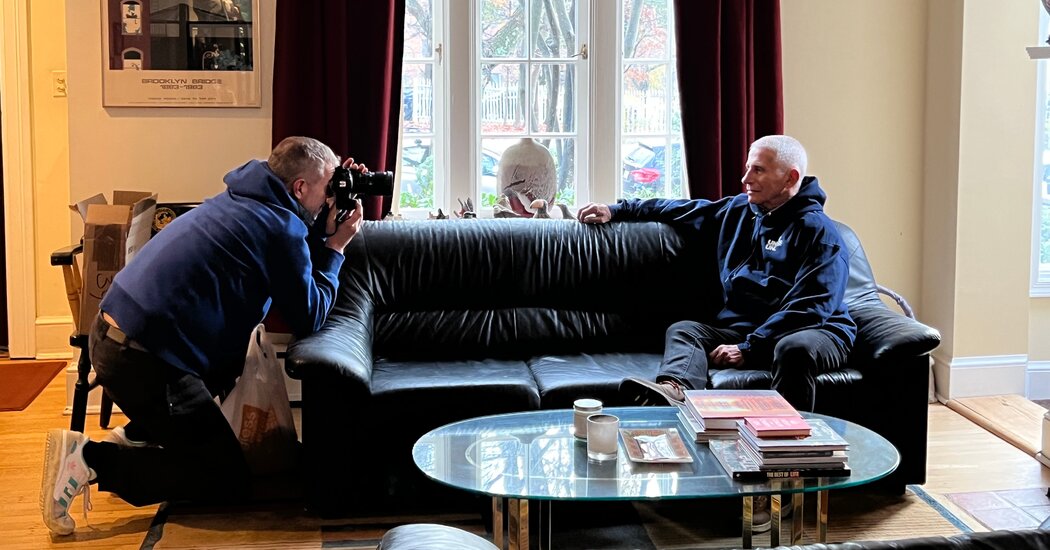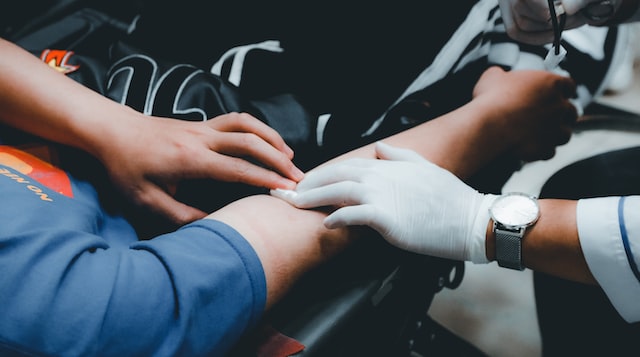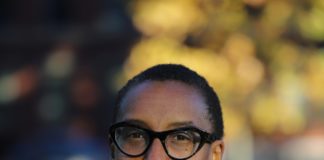
Dr. Anthony Fauci, often referred to as America’s doctor, will retire at the end of the month, after nearly 55 years at the National Institutes of Health. Today, Times Opinion published a guest essay by Fauci, in which he reflects on his tenure and imparts advice to the next generation of scientists.
Fauci shares important chapters of his career, including his work developing treatments during the AIDS crisis and helping the nation navigate the coronavirus pandemic.
To accompany his essay, I asked Wolfgang Tillmans, a renowned artist known for his photos of youth culture in the 1990s, landscapes, still lifes and portraits, to photograph Fauci — his first assignment for the newspaper. Tillmans’s photographs are sophisticated yet approachable, which reminded me of Fauci himself — a man who has been at the center of firestorms and yet feels accessible.
Tillmans has also lived with H.I.V. for over two decades and has used the medications Fauci helped develop, a fact he shared with the doctor during their session together. Tillmans asked Fauci if he could record some of their conversation, an excerpt from which we are sharing, lightly edited, below.
Wolfgang Tillmans: The first cases of what would come to be known as AIDS were discovered in the United States in 1981. I started following the science of AIDS in my teenage years. I always felt there is a specific poignancy to a virus that builds itself into the DNA of the very cells that the body produces to fight against it. Besides this scientific interest, AIDS also accompanied and terrorized me growing up and coming out as gay. In 1997 my partner died of AIDS, and at the same time I found out that I was H.I.V. positive and was able to start the therapy, which you and others were working on inventing throughout those years. So meeting you feels like coming full circle. What were those early years like?
Anthony Fauci: It was the early 1980s. I started taking care of people with H.I.V. before we knew it was H.I.V. It was just a mysterious disease killing almost exclusively gay men, at first very concentrated in New York, San Francisco and L.A. The first few years were the most terrible, traumatic years of my professional career, because all of my patients were dying. It was very dark, dark years. And then when the virus was discovered, we started to really be able to develop drugs and screen drugs, starting in 1986, 1987, when we had AZT, a type of antiretroviral. By 1996, the cocktail of three antiretrovirals came around.
You got therapy just in time, one year after the cocktail?
Tillmans: Yes, I was lucky. I mean it was a long 10 years since 1986. Now people talk about it as if it was “just” 10 years, but so many lives were lost and despair reigned in those years.
Fauci: Then everything turned around. I mean, it went from bleak to patients doing well, leading a normal life span, if you get it right now.
Tillmans: Initially, you were not seen as having this tolerant or positive image. You got a lot of pushback from advocacy groups, like ACT UP.
Fauci: Yeah. I was one of the few people that was full-time involved in H.I.V. Not a lot of scientists wanted to get involved. The approach was a very rigid scientific and regulatory approach on the part of the federal government; clinical trials had to be very strict. Drugs took years to get through the approval process. There wasn’t a lot of money. But since I was so visible, the activists saw me and said, “You are the face of the federal government.” So they started being very disruptive and theatrical to gain my attention. But as soon as they gained my attention, I started to listen to what they were saying. And what they were saying was absolutely correct.
The government was not doing the optimal approach. It was too rigid. They didn’t include the gay population in discussions of the design of the clinical trial. One of the best things I’ve ever done in my life is that when the activists were demonstrating, everybody else was saying, “Arrest them, put them in jail.” I was the one that said, “No, no, no, bring them into my office and let’s talk about it.”
Now the people who were the activists are my best friends. In fact, in December, the activists from New York, the original ACT UP team, are coming down to Washington to give me a farewell dinner. It’s interesting history. The same people that were in the street saying, you know, “Hang him,” “Kill him.” They’re all coming down now to celebrate with me.







